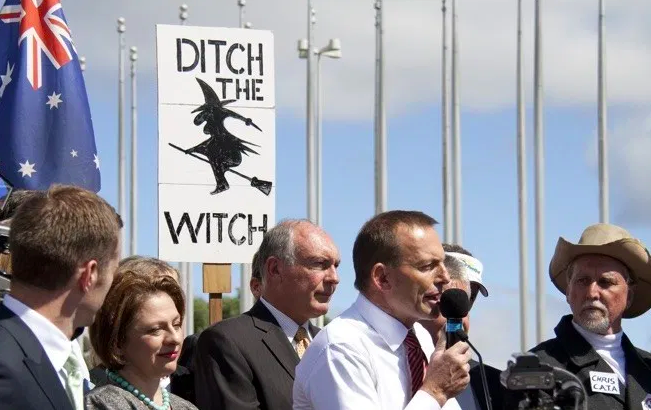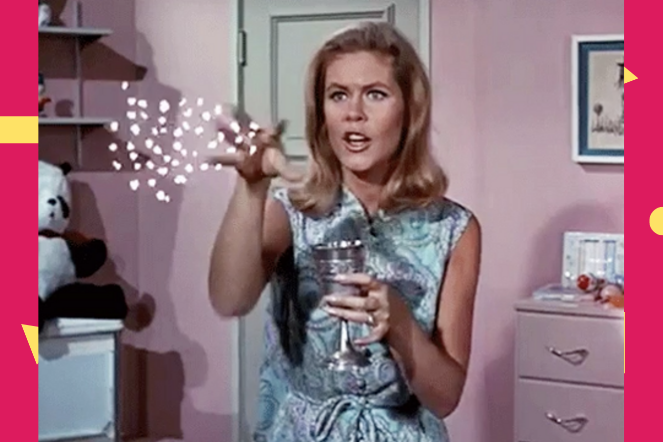Witchcraft is more popular than ever. Millennial women in particular are throwing off traditional religion in favour of paganism, Wicca and nonreligious witch practices. In fact, the Pew Research Centre found that 1.5 million Americans identified as pagan or Wiccan. In comparison, 1.4 million Americans identified themselves as belonging to the Presbyterian Church.
There are countless reasons behind this shift towards paganism: disillusionment with religious establishments, desire for a more personal spirituality, and how it’s a feminine-centric ideology. Media is partly to blame as well.
Millennials have grown up in an explosion of occult and pagan-adjacent media – Harry Potter, Sabrina the Teenage Witch and The Craft were certainly a big part of my childhood. Female witches like Hermione Granger and Sabrina Spellman were the heroes of our media, rather than the evil, dog-stealing, green-skinned witches of The Wizard of Oz.

But I would argue that the allure of witchcraft begins much, much earlier for many young girls.
As a child I was frequently found in the backyard, stirring ‘potions’ made out of rain water, grass, dirt and twigs. My much younger sisters were the same, this time making potions out of our mother’s shampoo, lotions and soap in the bathroom. We were never told to do this, nor what ingredients to use or that it was even a ‘witch’ thing. We just did it. For some of us, that’s it. A few muddy potions as kids and maybe the wave of a stick as an approximation of a wand, and that’s our foray into witchcraft.
But many teenage girls revisit their witchy phase.
One Tumblr user mused, “why DO teenage girls go through a witch/occult phase?” Another commenter had a theory: “Witches are one of the few cultural figures of female empowerment that don’t derive power from their relationship to a man.” It makes sense – pointy hats, black cats and magic wands are just the set dressing; witchcraft is about power. Female power.
Now, we all know that anyone of any gender can be a witch. But historically, the term ‘witch’ has always had a feminine connotation. The wise women, midwives and healers of pre-Christian Europe became witches as the male-dominated Catholic Church converted the ‘heathens’ of the pagan religions. Since then, witches have more often than not been women. While some men were caught up in the witch burnings of medieval Europe and Salem, the victims were mostly women – women accused of being powerful in societies that largely did not allow women to hold much power.
The fear of powerful women and the branding of them as ‘witches’ (in the negative sense) carries over into the modern day.
When Margaret Thatcher, Britain’s first female prime minister, died in 2013, the song ‘Ding Dong the Witch is Dead’ reached #3 in the UK’s music charts.
And who could forget Tony Abbott standing in front of a poster declaring ‘Ditch the Witch’ (former prime minister Julia Gillard being the witch).

Powerful women from Joan of Arc and Cleopatra to Anne Boleyn and Nancy Pelosi have been labelled ‘witches’ and bombarded with witch-related insults. The misogyny is clear. These women are too powerful, didn’t know their place, and ‘dared’ to claim a space for their own.
Tumblr’s suggestion then – that witches are powerful and wholly separated from male power – checks out.
Even without knowing all this, teenage girls are aware of the power inherent within witchcraft.
The allure of modern witchcraft is heavily based on feminine power: NYC-based practitioner Stacy Rapp says “women are particularly drawn to magic because of the gender equality inherent in the practice of witchcraft and the option to worship female deities”.
A large component of witchcraft, regardless of which tradition one practices, is the desire to control one’s situation. While Hollywood stereotypes witches wiggling their noses or snapping their fingers and having an immediate effect, the reality is much different.

Casting spells, creating amulets and talismans, and making potions are all ways in which modern witches attempt to regain some control of power over their life and the things going on around them.
Back in 2017, thousands of witches around the world developed a spell that they hoped would bind Donald Trump and the US Congress and prevent them from doing harm. Vicky Adams, a self-identified witch and owner of a prominent Hollywood occult store, said that “the Donald Trump spell is not a hex or a curse – it’s binding Trump and any of his abetters to prevent them from causing harm and destruction to people, animals, the environment, everything”.
Intent and desire are powerful forces in modern witchcraft practices; for many practitioners the casting of a spell or ingredients of a potion are less important than concentrating on the desired outcome and focusing the individual’s determination and intent.
The desire to take control of the things outside of one’s control is a feeling that is common to many teens and young women. The ability to find a voice when you feel voiceless, and to be powerful when you’re powerless is an attractive one.

